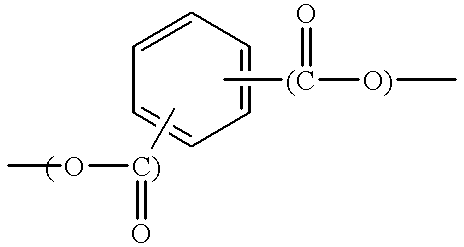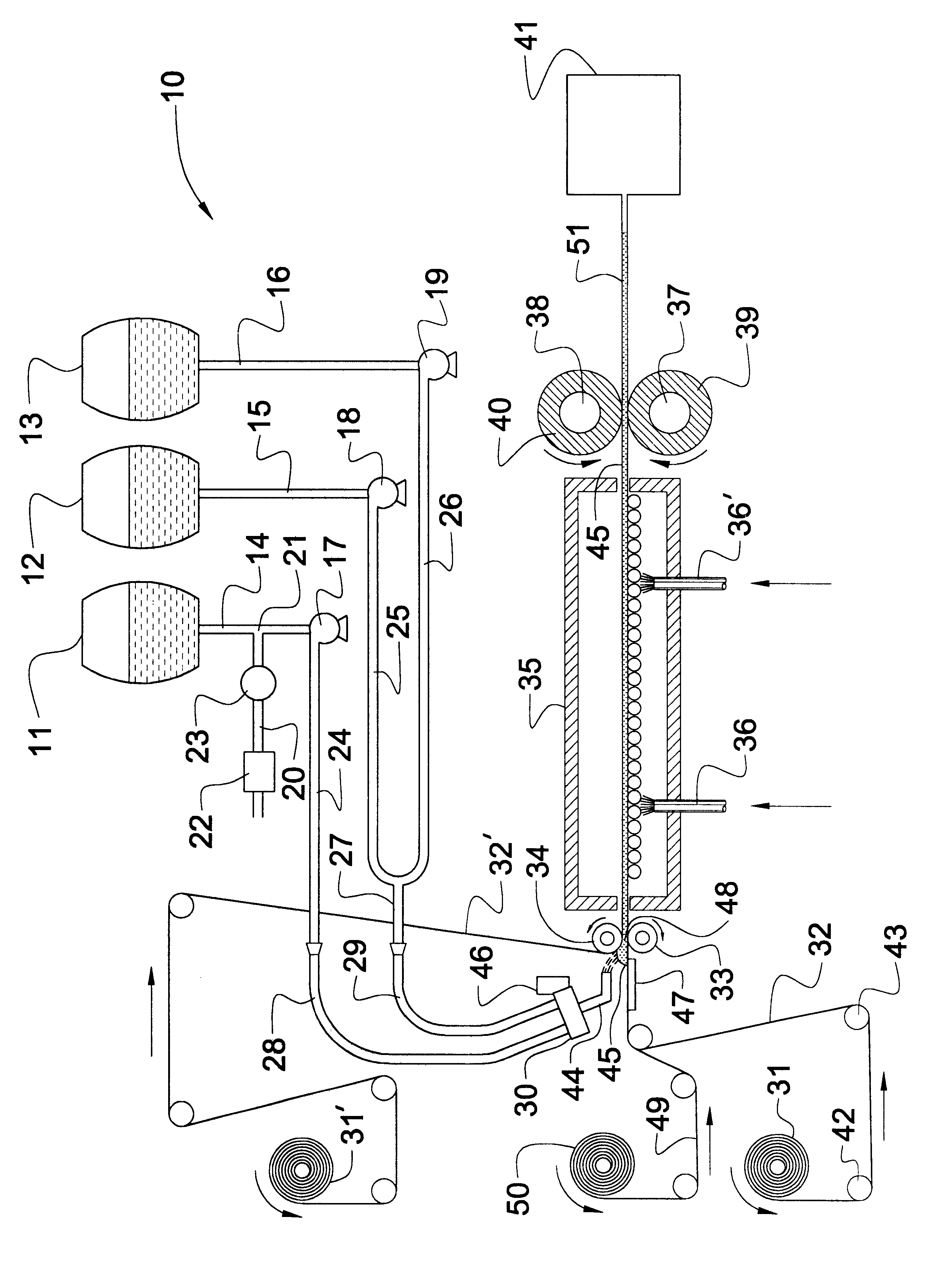Rolled rigid foam
a technology of rigid foam and rolled foam, which is applied in the direction of manufacturing tools, buttons, other domestic objects, etc., to achieve the effect of high closed-cell content and easy determination
- Summary
- Abstract
- Description
- Claims
- Application Information
AI Technical Summary
Benefits of technology
Problems solved by technology
Method used
Image
Examples
Embodiment Construction
This example illustrates the continuous production of rolled rigid foam laminates by reference to the drawing.
The foam laminates were prepared by a free-rise process from the ingredients and quantities thereof shown in the following Table 1.
Components A, B and C were pumped from tanks 11, 12 and 13, respectively. Top facer 32' and bottom facer 32 were each a 48 gauge metallized polyester sheet with Scharr Industries 3312 coating at 1.7 lb / 3MSF.
With the oven 35 heated to 210.degree. F. first zone and 220.degree. F. second zone, the facers were fed toward the nip of metering rolls 33 and 34, and the pumps 17, 18 and 19 were started to discharge the contents of tanks 11, 12 and 13 into the respective feed lines to carry the ingredients to the mixing head 30. The mixing head 30 deposited the foam forming mixture onto the lower facer and both upper and lower facers and foamable mixture were then conveyed through the regulating gap 48 provided by metering rolls 33 and 34. Roll 34 was flat...
PUM
| Property | Measurement | Unit |
|---|---|---|
| thickness | aaaaa | aaaaa |
| temperature | aaaaa | aaaaa |
| length | aaaaa | aaaaa |
Abstract
Description
Claims
Application Information
 Login to View More
Login to View More - R&D
- Intellectual Property
- Life Sciences
- Materials
- Tech Scout
- Unparalleled Data Quality
- Higher Quality Content
- 60% Fewer Hallucinations
Browse by: Latest US Patents, China's latest patents, Technical Efficacy Thesaurus, Application Domain, Technology Topic, Popular Technical Reports.
© 2025 PatSnap. All rights reserved.Legal|Privacy policy|Modern Slavery Act Transparency Statement|Sitemap|About US| Contact US: help@patsnap.com



